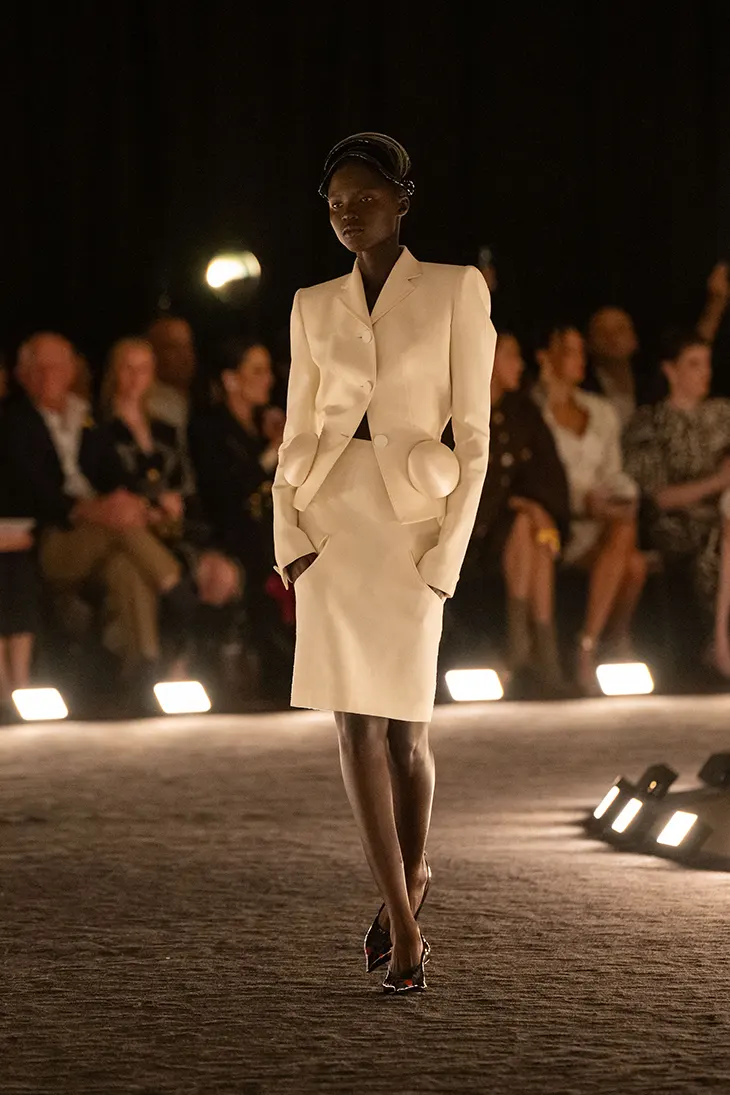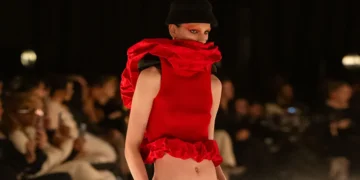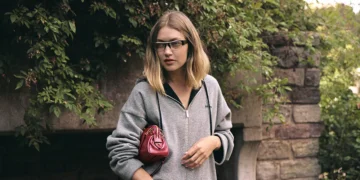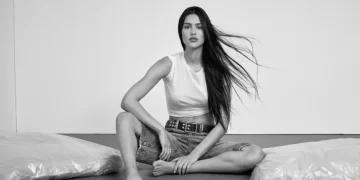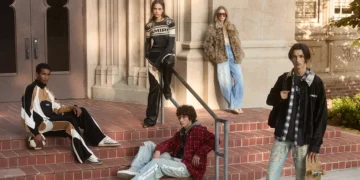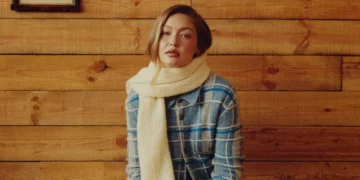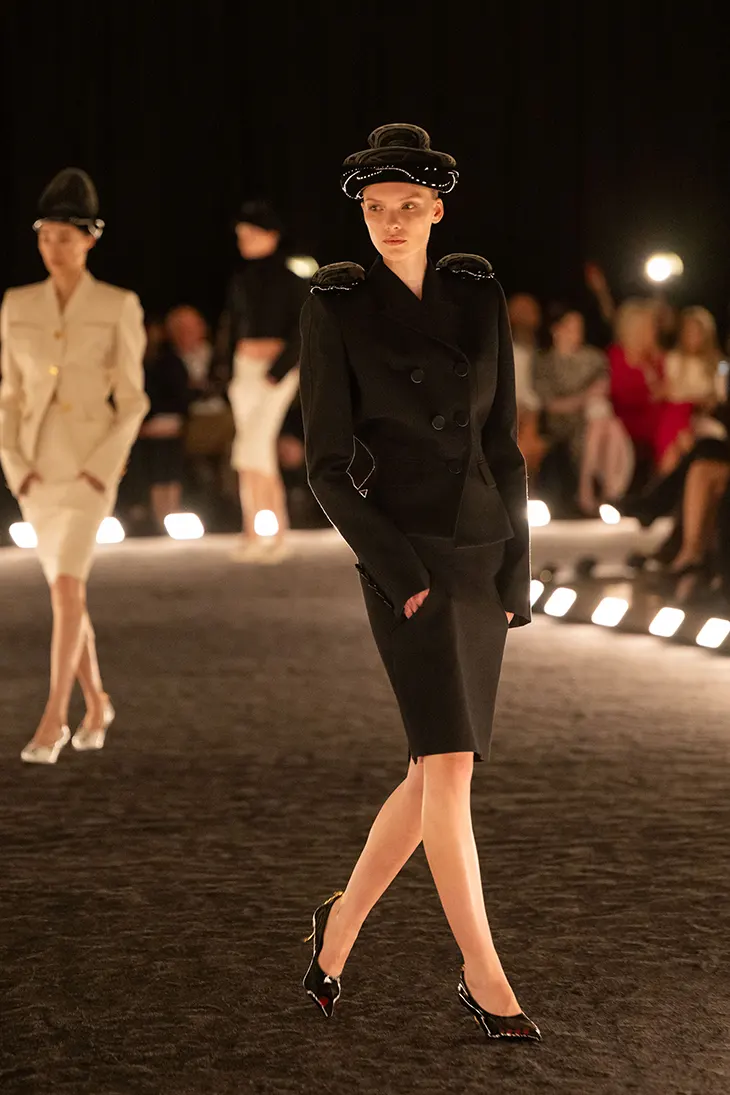
Daniel Roseberry staged Schiaparelli’s Spring Summer 2026 collection at the Centre Pompidou, a venue charged with cultural memory, and the choice made sense. He described the show as something closer to a museum visit than a fashion spectacle, an experience meant to inspire rather than merely entertain. The framing was deliberate: in a world of short-lived thrills and algorithmic distractions, Schiaparelli presented clothes with weight, texture, and resonance, garments meant to outlast a scroll.
SPRING SUMMER 2026
At the core of the collection was Elsa Schiaparelli’s love of tension and friction. Roseberry drew upon this instinct with tailored jackets that stood sharp and unadorned, shoulders squared in a “tailleur rigueur” that embodied control and restraint. That discipline extended into a series of column gowns, lean and slip-on, built from a kaleidoscope of techniques but pared back to a strict palette of black, bone white, and crimson. It was “hard chic,” a language both pared down and emotionally charged.
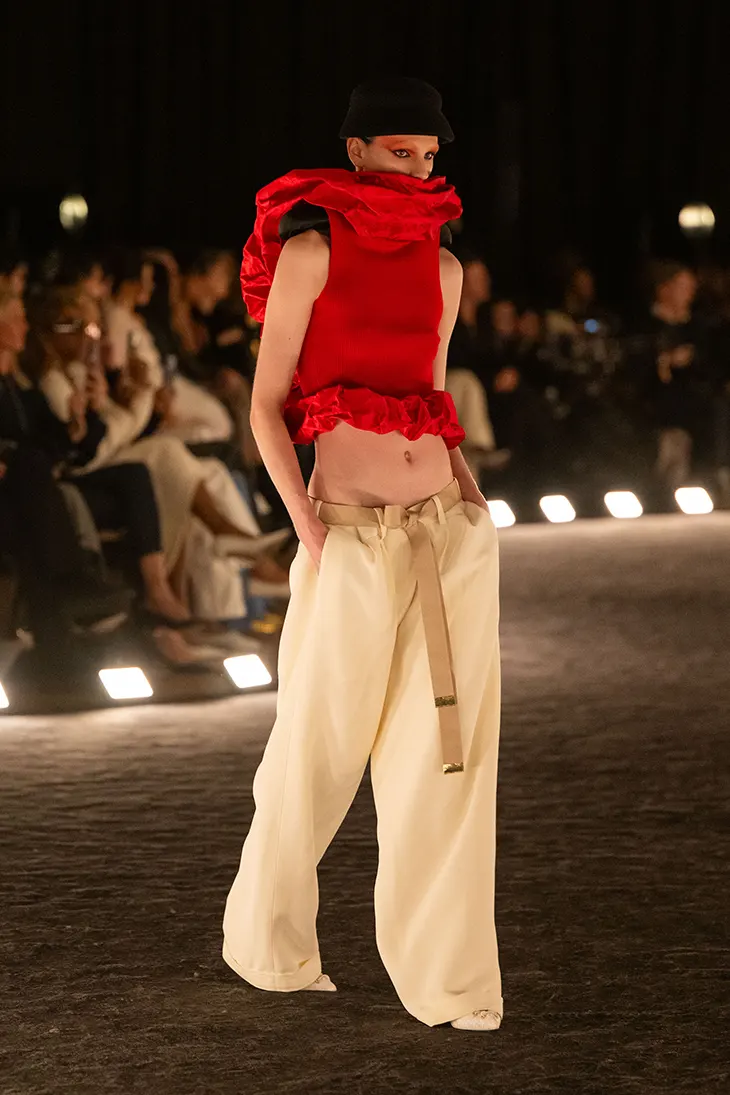
Roseberry’s drawings from the past months transformed into trompe l’oeil knitwear, executed in three-tone jacquards. These pieces nodded directly to Elsa’s own playful knits, reviving the house’s tradition of wit and provocation. The knitwear carried a painterly quality, as if sketches had been lifted off the page and wrapped around the body, collapsing the space between drawing and dressing. Shocking then, shocking now, as Roseberry put it.
Accessories extended that dialogue between art and fashion. The Secret handbag, with its signature padlock, appeared in softened volumes recalling Dalí’s melting clocks. Shoes followed the same path, each item beginning with sketches and finished with sculptural exactness. The process emphasized Roseberry’s insistence that even commercial products should carry the aura of an artwork. Nothing felt incidental; every piece held evidence of the hand.
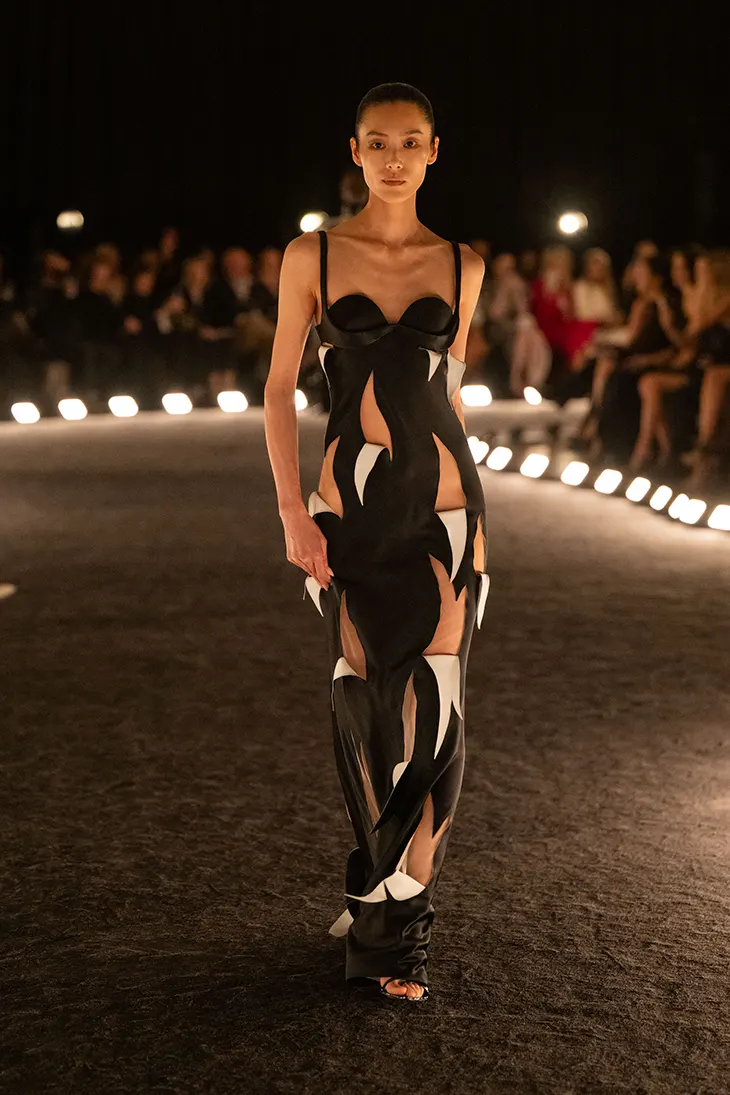
What once felt like a liability, designing ready-to-wear so meticulous it resembled couture, has, in Roseberry’s words, become the house’s strength. The collection argued that everyday clothes can sustain fantasy, that daily dressing can be elevated into ritual. Schiaparelli RTW emerged here as aspirational, accessible but charged with the weight of art history.
The show closed with Roseberry’s reminder that fashion exists in a world that can feel relentless and consuming. His response was to embrace freedom, ecstasy, and intimacy through clothes that let the wearer feel unashamed, dancing in the dark, as he put it. In this season, Schiaparelli positioned itself as a museum of possibility, carried into the rhythm of everyday life.
